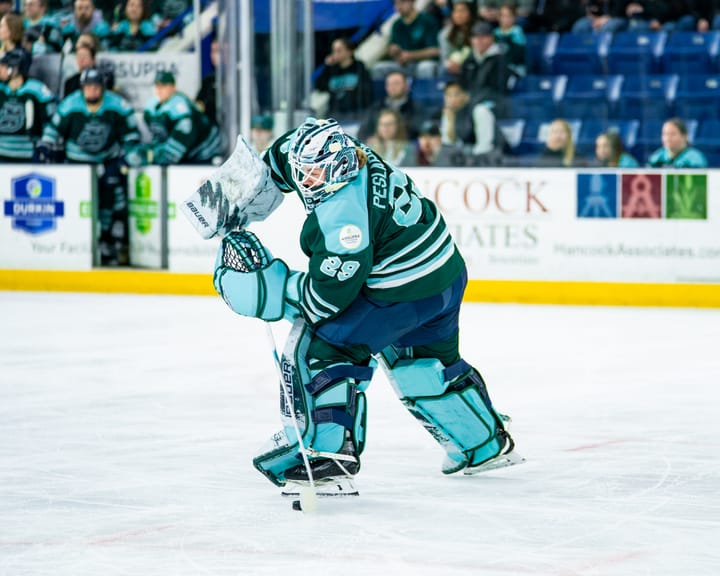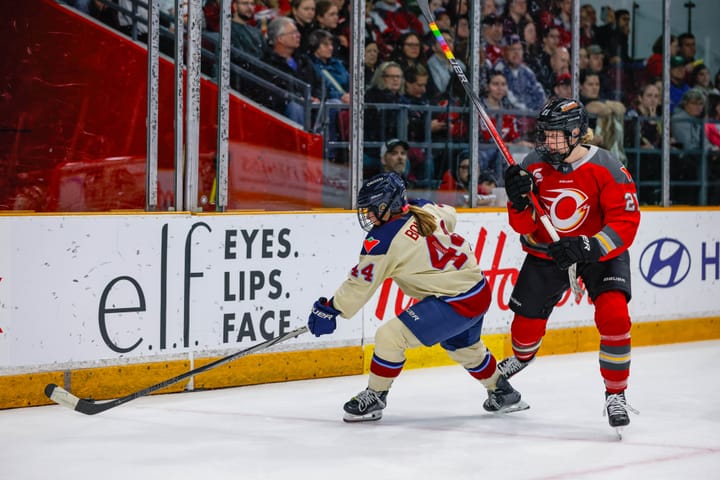Progress for the Blades has been slow, but steady
The Blades won just one game this year, but don’t let that convince you that they didn’t improve.
The Boston Blades finished dead last in the CWHL standings for the third straight season. The Blades’ record of 1-24-0-3 this year speaks volumes about how much ground they have to make up before they can truly compete with the CWHL’s other six teams. However, the CWHL’s only franchise in the United States managed to take some big steps in the right direction this year.
Related
CWHL 2017-18 Season Recap: Boston Blades
The Blades are not just the CWHL’s only North American franchise south of the border, they are also the only CWHL franchise that shares a market with an NWHL team. As a result, the Blades have had to compete directly with the Boston Pride for local talent for the past three seasons. And, on paper, the Pride have had a lot more success attracting talent than their CWHL counterparts.
The CWHL has a higher salary ceiling for its players than the NWHL, but it also has a lower salary floor. CWHL and NWHL player salaries are not made available to the public or to the media, but we can safely assume that the Blades were nowhere near their $100,000 salary cap this year. The Blades also have a much smaller and older home rink than the Pride, and a far more rigorous travel schedule. For all of these reasons and more, the Blades have struggled to add the talent that they need to be a winning hockey team.
Despite all of those challenges, the 2017-18 Blades, a team full of underdogs and unheralded players, made some significant strides this year.
Boston’s offense improved from 1.29 goals for per game in 2016-17 to 2.28 goals for per game this past year. Even more importantly, the Blades’ goal differential advanced from -105 (in 24 games) to -76 (in 28 games). If we consider empty net goals that goal differential gets a little better; the Blades allowed five more empty netters this year than they did in 2016-17. That increase in the number of empty net goals allowed suggests that the Blades were competitive through the final minutes of far more games this year, and the numbers support that theory.
Perhaps the area where the Blades made the biggest strides was special teams play. Unfortunately we almost certainly don’t have accurate special teams data for the 2017-18 season, but that doesn’t change how much the Blades’ power play progressed. In 2016-17 Boston scored just 11 power play goals; seven of those goals came from Kate Leary and Meghan Grieves. This year the Blades scored 18 power play goals, and five Boston skaters had two or more power play goals.
On the penalty kill, the Blades improved from 13.9 percent in 2016-17 to 17 percent in 2017-18 — again, these numbers come with an asterisk attached to them because of the CWHL’s issues with stat tracking, but they still indicate a marked improvement. Much of the credit for that improvement belongs to franchise goaltender Lauren Dahm, who rose from an .882 save percentage as a rookie to a .907 save percentage in her second CWHL season.
The fact that the Blades were able to improve as much as they did despite a mid-season coaching change, the departure of cornerstone defender Tara Watchorn in the 2017 offseason, and 12 new skaters on the team is pretty remarkable.
The Blades’ progress been subtle, but when you look beyond the team’s record there’s no denying that it’s there. What the Blades need more than anything is stability off the ice and behind the bench to attract new talent. Whether or not the Blades can find a way to make that happen is the biggest question facing the team this offseason.
EDIT: A mistake in this article naming Krista Patronick as the general manager of the Blades has been corrected.





Comments ()